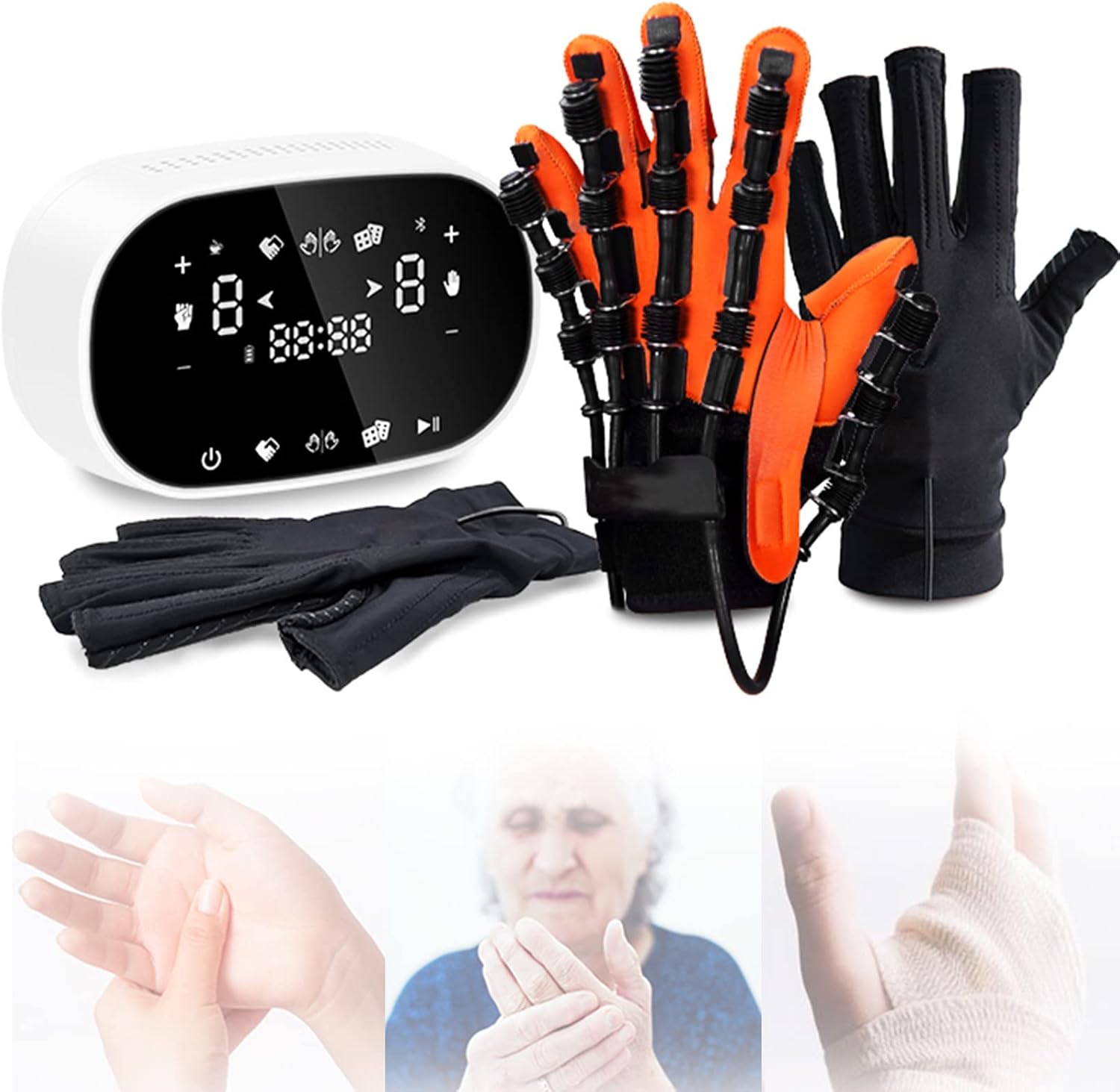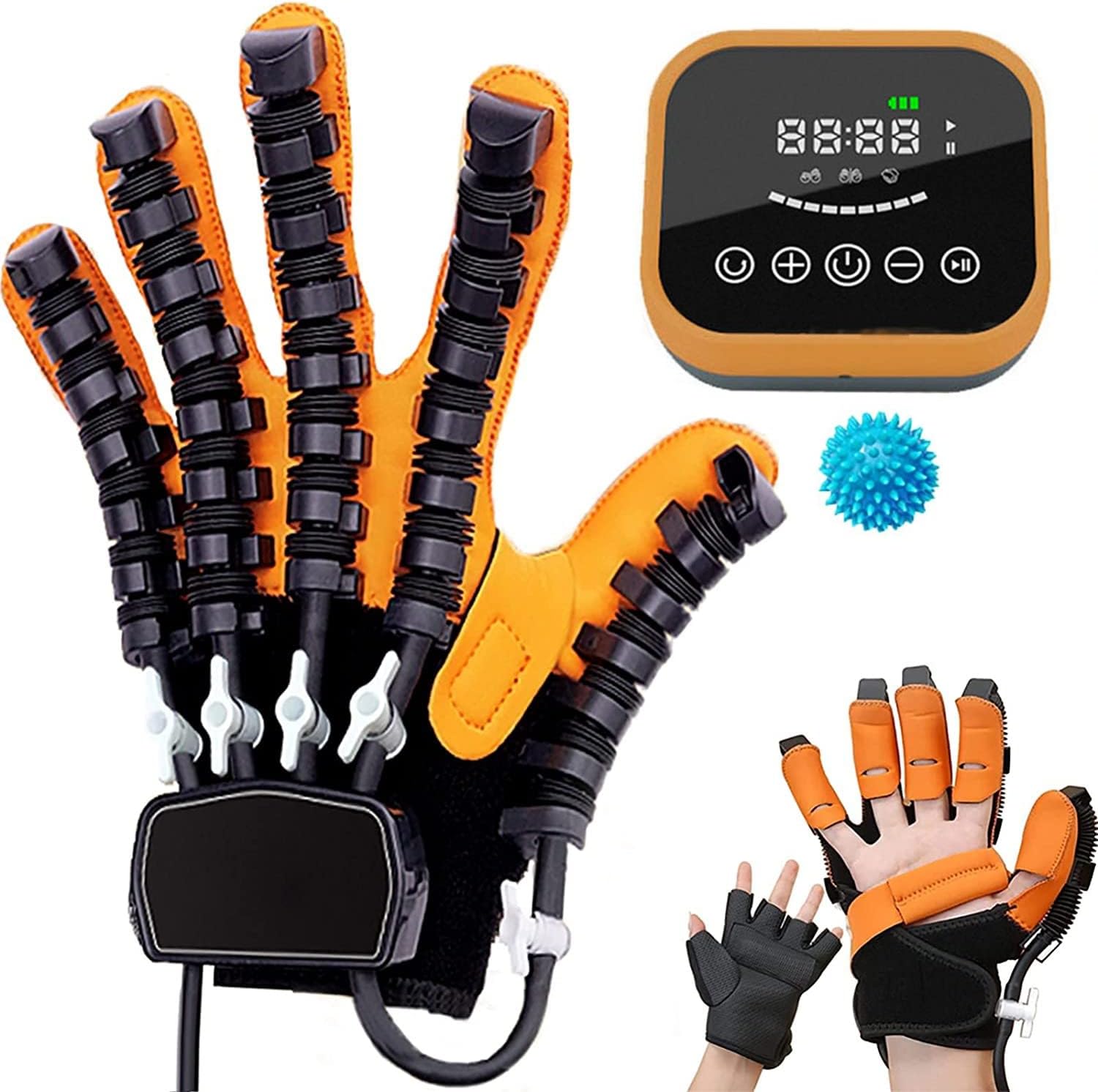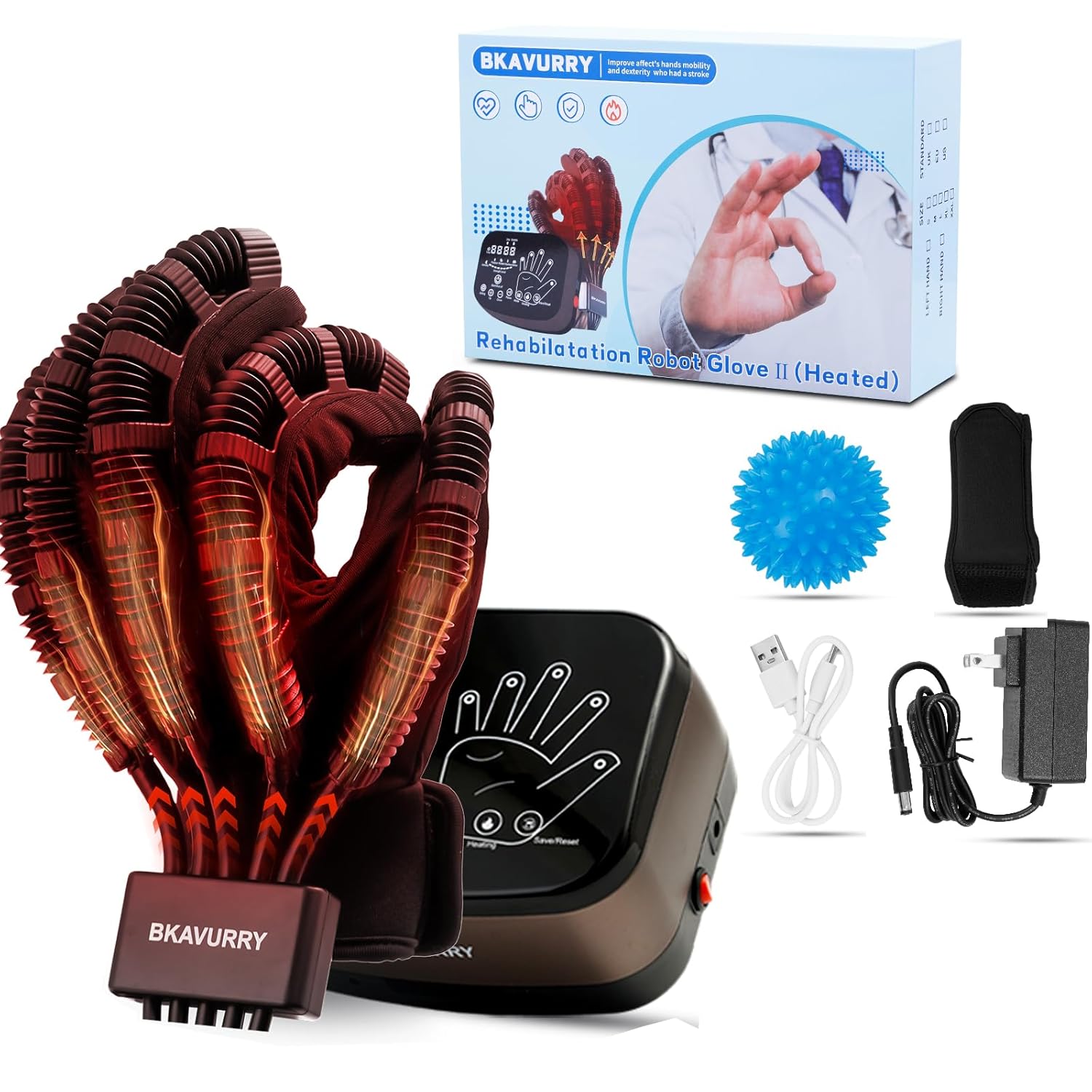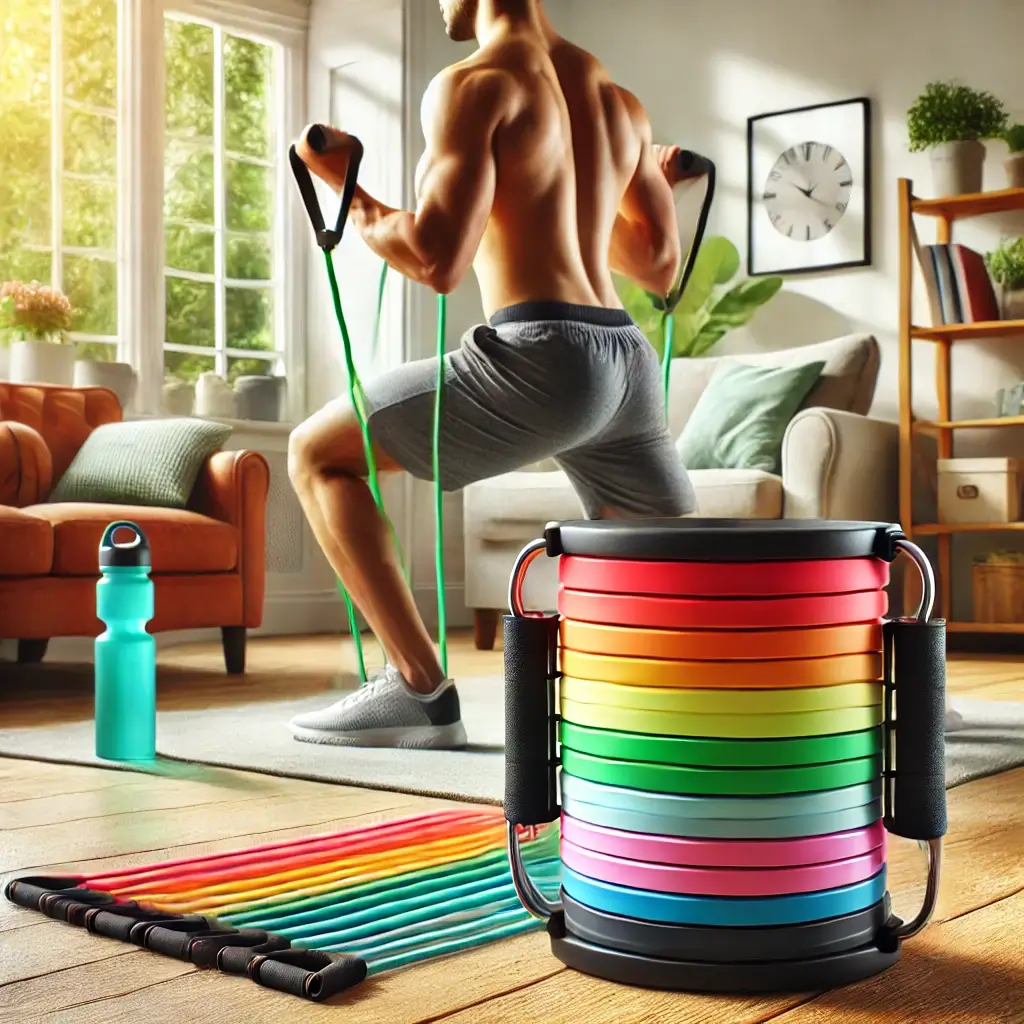5 Best Rehabilitation Robot Gloves for Hand Recovery in 2025
Welcome to your definitive guide to reclaiming hand function and independence. We’ve meticulously researched and reviewed the top robotic gloves on the market to help you find the perfect partner in your recovery journey. Read on to discover how this cutting-edge technology can accelerate your healing.
Hand and finger mobility is something most of us take for granted until it’s compromised. Conditions like a stroke, spinal cord injuries, cerebral palsy, or even severe arthritis can make simple tasks like holding a cup or buttoning a shirt feel monumental. For years, rehabilitation has relied on traditional physical therapy, which, while effective, can be slow and limited by access to therapists.
Enter the age of assistive technology. Rehabilitation robot gloves are at the forefront of this revolution, offering a powerful, in-home solution to help patients regain strength, dexterity, and control. These devices use advanced robotics and pneumatic systems to move the user’s fingers and hand through passive training exercises, stimulating both muscles and nerves to promote neuroplasticity—the brain’s amazing ability to rewire itself.
What Exactly Are Rehabilitation Robot Gloves and How Do They Work?
At its core, a rehabilitation robot glove is a wearable device designed to facilitate hand movement for individuals with neurological or musculoskeletal impairments. It combines soft robotics, air pressure systems, and often, mirror therapy technology to create a comprehensive rehabilitation tool.
Here’s the basic principle:
- The Robotic Glove: The patient wears a soft, flexible glove on their affected hand. This glove has individual actuators for each finger.
- The Control Unit: A small, portable console houses an air compressor. This unit pumps air into the glove’s actuators, causing them to gently open and close the user’s fingers in a controlled manner.
- Mirror Therapy: Many advanced models include a “mirror glove” for the healthy hand. The user wears this on their unaffected hand and performs a grasping motion. Sensors in the mirror glove translate this movement, telling the robotic glove on the affected hand to mimic the exact same action in real-time. This technique is incredibly effective for tricking the brain into rebuilding neural pathways to the impaired limb.
This process of repeated, guided movement helps to reduce muscle spasticity, improve circulation, prevent muscle atrophy, and most importantly, accelerate the brain’s recovery process for controlling the hand.
How We Chose the Best Gloves for This Review
To provide you with trustworthy recommendations, we focused on several key criteria that matter most to users. Our selection process is built on expertise and a deep understanding of what makes a recovery device effective.
- Effectiveness & Technology: We prioritized gloves that use proven technologies like pneumatic power and mirror therapy.
- Ease of Use: A recovery tool should reduce frustration, not add to it. We looked for intuitive controls, clear displays, and simple setup.
- Customization & Fit: One size doesn’t fit all in recovery. We selected products with multiple sizing options and adjustable intensity levels.
- User Reviews & Trustworthiness: We analyzed real-world feedback from verified purchasers on Amazon, focusing on long-term benefits and product reliability.
- Value for Money: We assessed the features offered against the price point to ensure you’re getting a quality product that justifies the investment in your health.
Drawing from this rigorous process, we’ve identified the best rehabilitation robot gloves currently available to aid in your recovery.
Our Top 5 Picks for 2025

1. Syrebo Hand Rehabilitation Robot Glove System
The Syrebo system consistently ranks as a top choice for its robust build, powerful pneumatic assistance, and user-friendly interface. It’s a clinical-grade device adapted for home use, making it a serious investment for those committed to recovery. It offers multiple training modes, including passive flexion/extension and task-oriented training.
Pros
- Powerful and reliable pneumatic system
- Multiple training modes for varied therapy
- Includes effective mirror therapy function
- High-quality materials built for longevity
- Available in a wide range of sizes
Cons
- Higher price point than competitors
- Control unit can be a bit bulky

2. PEFK Hand Rehabilitation Robotic Gloves (Upgraded Model)
This upgraded model from PEFK is a fantastic mid-range option that packs in premium features. It boasts a quieter, more portable air pump and an intuitive LCD touchscreen. The mirror mode is smooth and responsive, and users appreciate the ability to train individual fingers, allowing for targeted therapy where it’s needed most.
Pros
- Individual finger training capability
- Clear and easy-to-use LCD touchscreen
- Portable and relatively quiet operation
- Excellent value for the features offered
- Lightweight and comfortable glove material
Cons
- Power cord could be longer
- Sizing can be tricky; measure carefully

3. Comfecto Stroke Hand Recovery Equipment
The Comfecto glove is an excellent choice for users focused on simplicity and affordability without sacrificing core functionality. It provides reliable passive training and mirror therapy in a straightforward package. The control unit uses simple, tactile buttons instead of a touchscreen, which can be easier for some users with cognitive or visual impairments to operate.
Pros
- Very easy to set up and operate
- Tactile buttons are great for all users
- Affordable entry into robotic rehabilitation
- Lightweight and portable design
- Effective for reducing hand stiffness
Cons
- Lacks individual finger control
- Air pump is slightly louder than premium models

4. WILLWOLF Hand Function Rehabilitation Robotic Glove
The WILLWOLF glove stands out with its powerful motor and emphasis on providing strong, consistent flexion and extension forces. This makes it particularly suitable for individuals dealing with high levels of spasticity or muscle stiffness. It features a clear interface and multiple modes, including a unique setting that holds the grip for a sustained period to help stretch tendons.
Pros
- Strong motor for overcoming spasticity
- Sustained stretching mode is a unique feature
- Durable construction of both glove and console
- Fully adjustable air pressure and speed
- Effective mirror therapy function
Cons
- Heavier than some other models
- Can be too powerful on the highest settings for some

5. CUALQUE Rehabilitation Robot Gloves
From the well-known brand CHIROGUN, this device focuses on a sleek, portable design. It’s one of the most compact and lightweight options available, making it perfect for travel or for users who don’t want a cumbersome machine. Despite its small size, it delivers effective therapy with adjustable intensity and a highly responsive mirror glove, making it a versatile and convenient option.
Pros
- Extremely lightweight and portable
- Sleek, modern design
- USB-C charging for convenience
- Surprisingly powerful for its size
- From a reputable brand in recovery tech
Cons
- Smaller battery due to compact size
- May not be strong enough for severe spasticity
Buyer’s Guide: What to Consider Before You Purchase
Choosing the right device is a critical step. Here are the key factors to weigh:
- Severity of Condition: If you have severe spasticity, you’ll need a glove with a more powerful motor, like the WILLWOLF. For milder conditions or later-stage recovery, a more portable option like the CHIROGUN might suffice.
- Technical Comfort: Do you prefer a simple, button-operated device or a more feature-rich touchscreen? Consider the user’s comfort level with technology.
- Sizing and Fit: Carefully measure the user’s hand according to the manufacturer’s chart. A poor fit can make therapy ineffective or uncomfortable. Ill-fitting gloves are a common issue, and for those with conditions like swelling, finding the right fit is even more crucial. This is also a key consideration when looking for the best arthritis gloves, where compression and fit are paramount.
- Portability and Power: Will the device stay in one room, or do you need to travel with it? A lighter, battery-powered model offers more flexibility.
Integrating Robotic Gloves with Other Therapies
While these gloves are powerful, they work best as part of a comprehensive recovery plan. Combining their use with other exercises can lead to even better outcomes. For instance, once you regain some gross motor function, incorporating resistance training is a great next step. Using a compact resistance band set is perfect for quick workouts that build strength in the arms and shoulders, which is essential for supporting hand function.
Similarly, recovery is not always isolated to one area. If a stroke or injury has affected your entire arm, you may also need support for your shoulder joint. In these cases, exploring tools like the best shoulder braces can provide stability and prevent further injury during your rehabilitation exercises.
Frequently Asked Questions (FAQ)
Who can benefit most from a rehabilitation robot glove?
Individuals who have lost hand function due to stroke, traumatic brain injury, spinal cord injury, cerebral palsy, and other neurological disorders are ideal candidates. They are also used to combat the stiffness and loss of mobility from severe arthritis or after hand surgery.
How long should I use the glove each day?
Most manufacturers and therapists recommend starting with 20-minute sessions, 2-3 times per day. It’s crucial to listen to your body and not overdo it, especially in the early stages. Consistency is more important than duration. Always consult with your doctor or physical therapist for a personalized plan.
Is it painful to use?
No, it should not be painful. The movements are designed to be gentle and controlled. You can adjust the intensity (air pressure) to a comfortable level. You should feel a definite stretch and movement in your hand, but if you experience sharp pain, you should stop and consult a professional.
Can these gloves be used for conditions other than stroke?
Absolutely. While stroke recovery is the most common application, they are highly effective for anyone with hand paresis or spasticity. This includes patients with multiple sclerosis, cerebral palsy, or those recovering from orthopedic hand surgery. They provide the repetitive motion needed to stimulate nerve and muscle recovery across a wide range of conditions. For those with chronic breathing issues alongside mobility challenges, it’s also worth looking into assistive devices like the best portable nebulizers to manage overall health.
How soon can I expect to see results?
Neuroplasticity takes time and patience. Some users report a noticeable decrease in stiffness and improved passive range of motion within a few weeks. More significant gains in active control and strength can take several months of consistent use. Every recovery journey is unique, so it’s important to set realistic goals and celebrate small victories.
Important Disclaimer: The information in this article is for educational purposes only and is not a substitute for professional medical advice. Always consult with your doctor, physical therapist, or a qualified healthcare provider before beginning any new treatment or using a medical device. The products listed are available on Amazon, and as an Amazon Associate, we may earn from qualifying purchases.
Conclusion: Your Partner in Recovery
Choosing the right rehabilitation robot glove is a significant step towards reclaiming your independence. The technology offers a level of consistent, repetitive, and targeted therapy that was once only available in clinical settings. By stimulating the brain and muscles simultaneously, these devices can significantly accelerate recovery time and improve your quality of life.
Our top recommendation, the Syrebo Hand Rehabilitation Robot Glove, offers the best combination of power, features, and reliability for those serious about their recovery. For a more budget-conscious choice with excellent features, the PEFK Upgraded Model provides incredible value. Ultimately, the best glove is the one that fits your specific needs, budget, and recovery goals. We hope this guide has empowered you to make an informed decision and take control of your healing journey.


